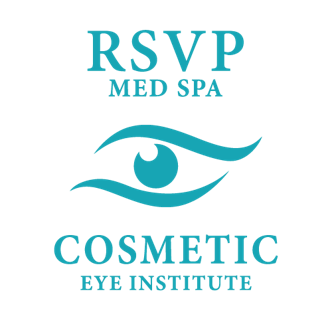A Comprehensive Guide to Blepharoplasty vs. Ptosis Repair
- by DLM Admin
- October 3, 2023
- Eye Procedures,

As we age, various signs of aging can manifest in our appearance, with our eyes often being the first area to show noticeable changes. Two common procedures aimed at rejuvenating the eye area are blepharoplasty and ptosis repair. While both surgeries target the eyes and upper eyelid ptosis, they serve different purposes and cater to different concerns. In this blog post, we will delve into the distinctions between blepharoplasty and ptosis repair, explore the ideal candidates for each procedure, and highlight the various methods used to repair ptosis here at RSVP Med Spa.
Blepharoplasty vs. Ptosis Repair – Understanding the Difference
Blepharoplasty
Blepharoplasty, also known as eyelid surgery or an eyelid lift, is a cosmetic procedure designed to address aesthetic concerns around the eyes. This surgery targets drooping eyelid skin, fat, and muscle in the upper or lower eyelids to create a more youthful and rejuvenated appearance. It is commonly sought to treat sagging or drooping eyelids, under-eye bags, and fine lines or wrinkles around the eyes. It can be distinguished into upper eyelid blepharoplasty, which targets upper eyelid ptosis, and lower blepharoplasty, which creates a more youthful appearance under the eyes.
Ptosis Repair
Ptosis repair, on the other hand, is a functional procedure primarily focused on correcting drooping or sagging of the upper eyelid caused by a weakened or stretched levator muscle. The levator muscle is responsible for lifting the upper eyelids. When it doesn’t lift the upper eyelids properly, it can result in droopy eyelids. Unlike blepharoplasty, ptosis repair aims to restore proper functionality to the eye, rather than primarily addressing cosmetic concerns.
Ideal Candidates for Blepharoplasty and Ptosis Repair
Blepharoplasty Candidates
Ideal candidates for blepharoplasty are individuals who exhibit signs of aging around the eyes, such as excess skin on the upper eyelids, bags under the eyes, and puffiness. Candidates should be in good general health, have realistic expectations for the results, and not have any pre-existing eye conditions that could complicate the procedure.
Ptosis Repair Candidates
Ptosis repair is recommended for individuals with eyelid ptosis, a condition characterized by a drooping or low position of the upper eyelid, which can partially or fully obstruct vision. It is vital to identify the type of ptosis, as there are congenital (present from birth) and acquired (developed later in life) forms, each requiring different treatment approaches. Suitable candidates for ptosis repair should undergo a comprehensive eye examination to determine the severity of the condition and whether they can benefit from the surgery to repair the eyelid muscle.
Various Methods for Ptosis Repair
Levator Resection or Advancement
The most common technique for repairing ptosis is levator resection or advancement. In this procedure, the surgeon tightens the levator muscle, enabling the eyelid to lift to the desired height. This method is often used for mild to moderate ptosis.
Muller Muscle-Conjunctival Resection
For patients with mild ptosis, the Muller muscle-conjunctival resection technique is preferred. It involves shortening the Muller muscle and the conjunctiva to achieve a subtle lift to the upper eyelids.
Frontalis Sling Surgery
Frontalis sling surgery is typically used for severe cases of ptosis or when the levator or Mueller muscle cannot be effectively repaired. In this procedure, a sling made of synthetic material or the patient’s tissue is attached to the forehead muscles, allowing them to lift the upper eyelids.
Upper Eyelid Surgery in Overland Park, KS
Whether you are considering blepharoplasty for cosmetic reasons or ptosis repair to enhance vision and functionality, it is crucial to consult with a qualified and experienced oculoplastic surgeon. Dr. Selena Fu has completed additional fellowship training after her ophthalmology residency training, allowing her to specialize in upper blepharoplasty and ptosis surgery. She will conduct a thorough evaluation to determine the most suitable procedure for your unique needs. Remember, understanding the differences between blepharoplasty and ptosis repair is the first step towards making an informed decision about the best course of action to achieve your desired outcome. Contact us today to learn more.

